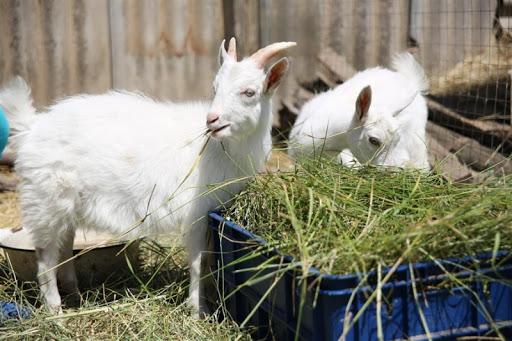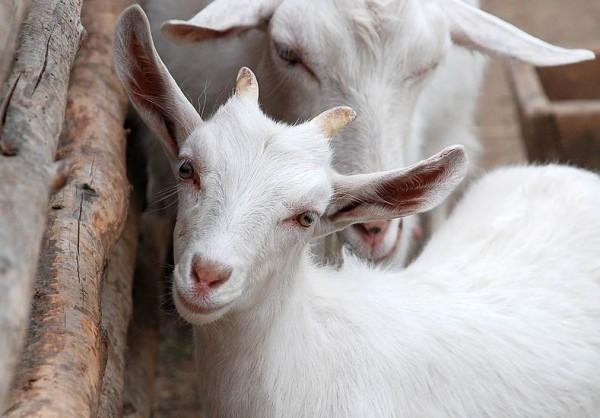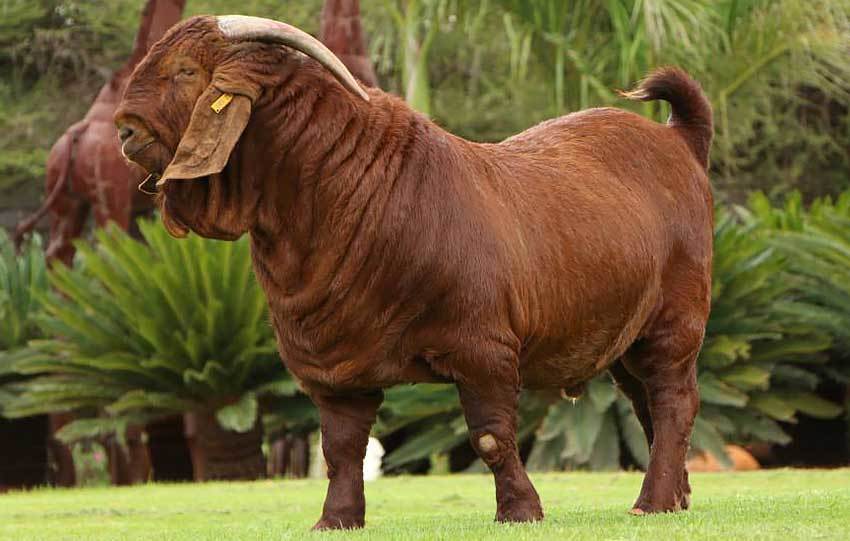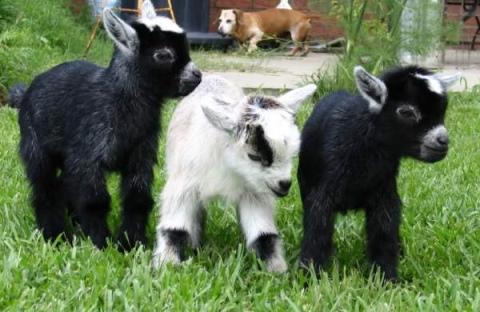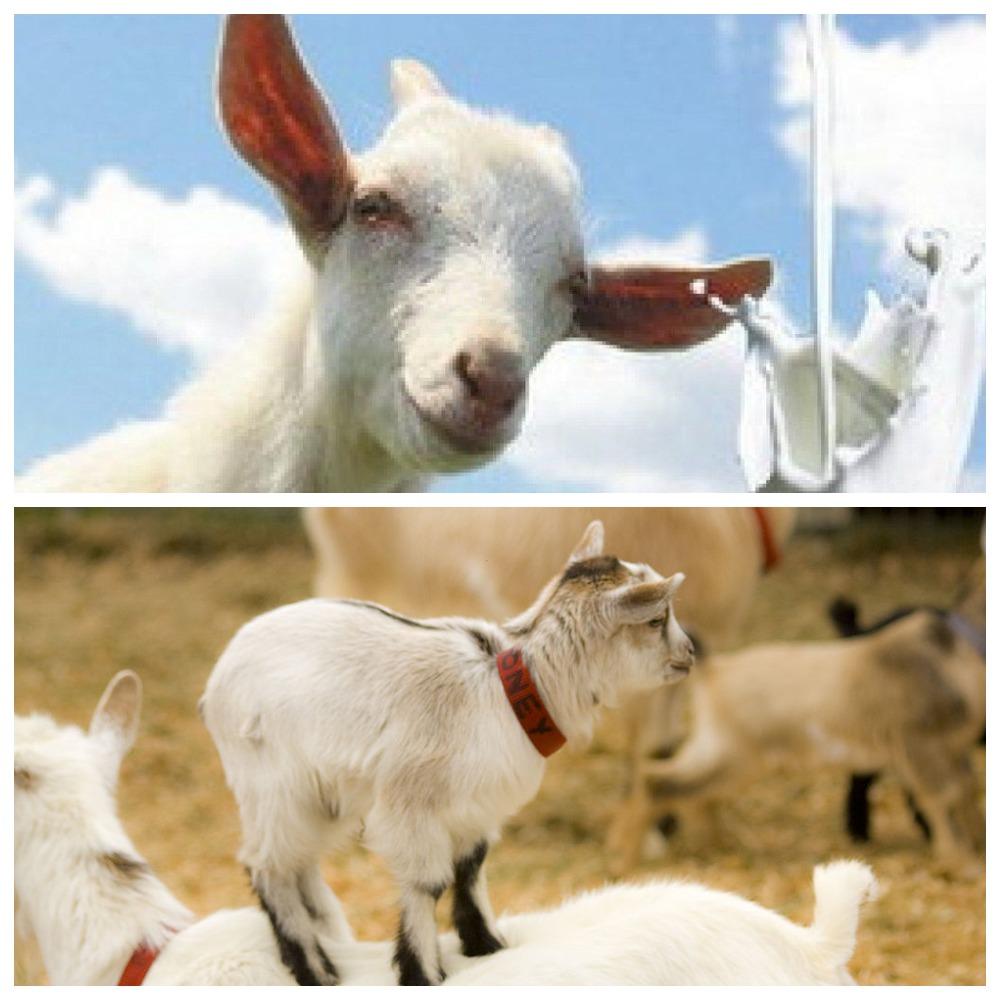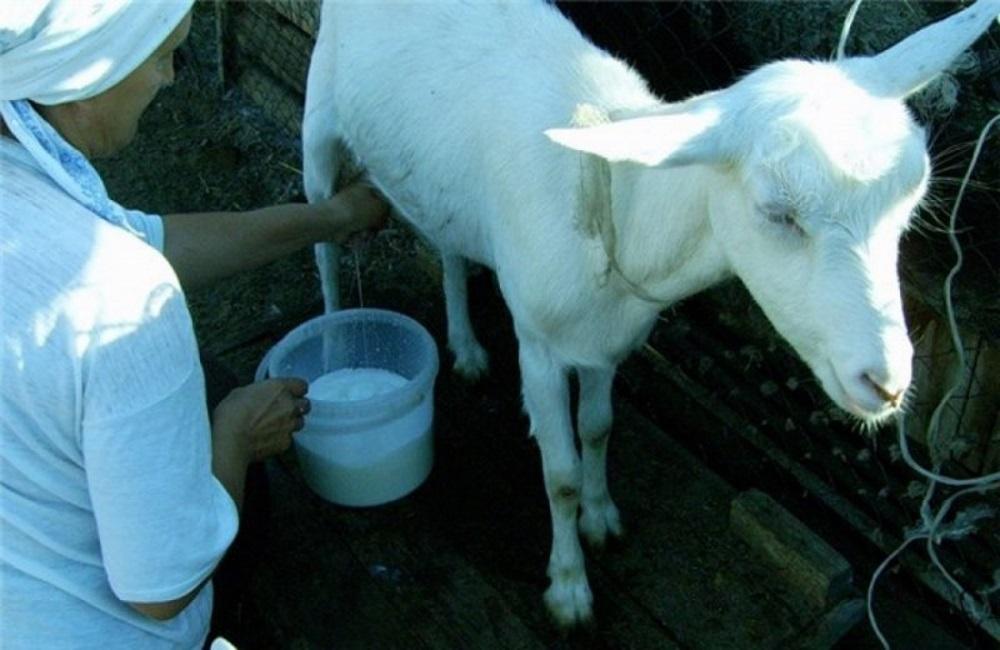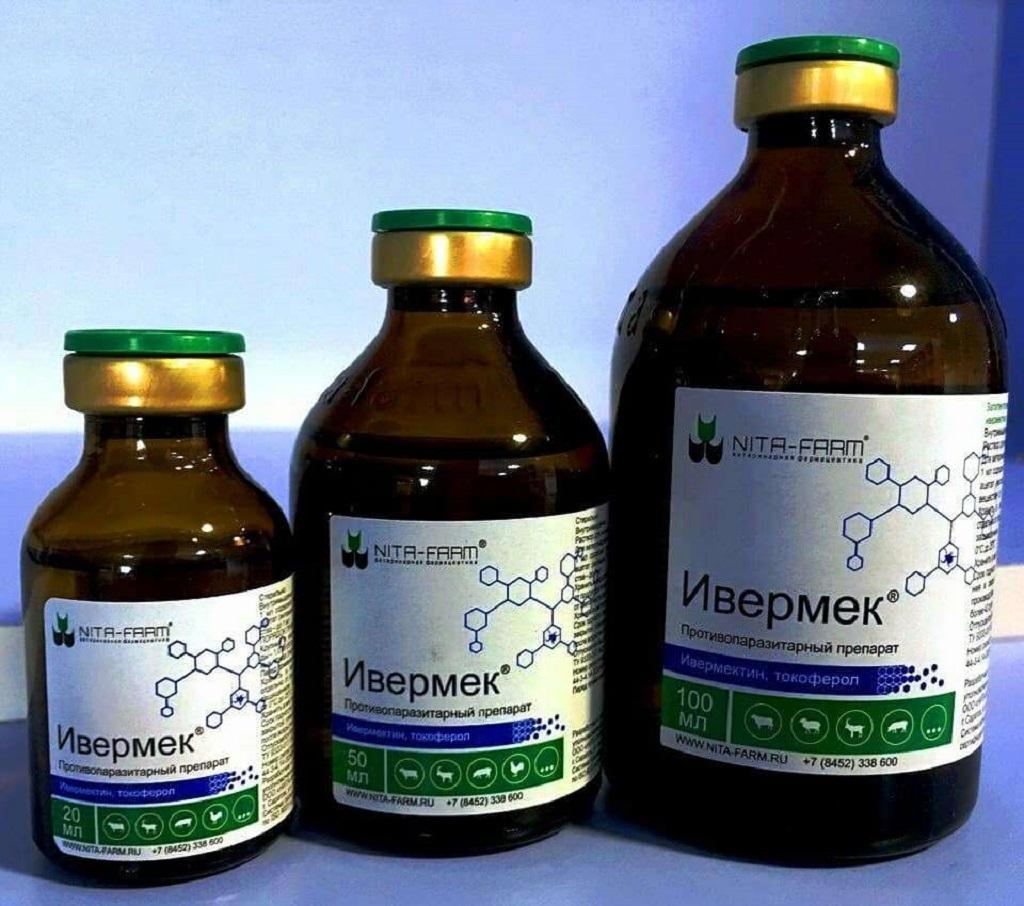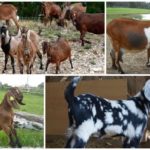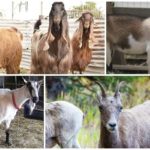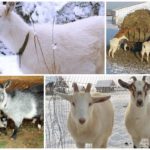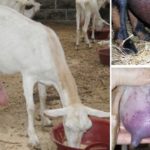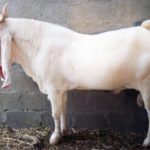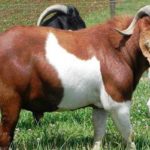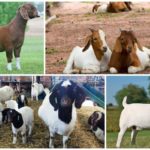How to get a goat for milk, meat, fluff, where to start - this is a question that interests many. This animal is profitable to breed. It eats little and produces at least 2 liters of milk per day. The goat needs to be fed three times a day and milked in the morning and evening. You can buy a meat breed, feed it on grass during the summer season and slaughter it for meat. True, such goats are very expensive, because almost no one breeds them in our area.
Breed selection
People living in rural areas or who have a house, a dacha and their own pasture near the city can afford to have a goat. This animal produces tasty and very fatty milk, from which sour cream, feta cheese, cheese, cottage cheese, and butter are obtained. Dairy products have a sweetish, creamy taste and a light color. Animals are bred to have their own milk and not have to buy it in the store.
You can also get delicious tender meat, beautiful skin and warm fluff from goats. The milk of these animals is unlikely to be sold; only children drink it. People are more likely to buy pig or calf meat at the market than goat meat. Skin and goat hair or fluff are not that expensive. If goats are kept, it is only for personal needs, but not for commercial ones.
Dairy
Most often, goats are bred for milk. For this purpose, they buy dairy animals (Czech Brown, Toggenburg, Saanen, Russian, Gorky, Alpine, Megrelian Nubian). They begin to milk after the first lambing. They produce about 4-5 liters of milk per day. The lifespan of animals is 8-12 years.
For breeding, it is better to buy young goats that have already been milked. They cost, depending on the breed, about $300 or more, outbred ones cost $50-100. When purchasing, pay attention to the animal's udder. It should have a pear-shaped or cup-shaped elastic shape, medium-sized nipples, and clearly visible milk veins. A pasty or loose udder is a sign of a non-dairy breed. It is recommended to milk the goat at the time of purchase. After milking, the udder should fall in folds, which will indicate the absence of fat deposits.
When purchasing young goats over 4 months of age, you should immediately think about a goat.After all, the goat begins to milk only after the first lambing. The goat is bred at 12-18 months, and pregnancy lasts another 5 months. Only then will she begin to give milk. True, you can milk a virgin goat.
Downy
Fans of hand-knitting and craftsmen can buy a downy breed. These animals will still produce at least 2 liters of milk per day. Goats of downy breed: Orenburg, Pridonskaya, Gorno-Altai, Angora, cashmere. They cost no less than $300.
In the downy breed, the coat consists of coarse hair and soft down. Goats have their fluff combed out when they shed. In the spring, some downy breeds (except Angora) have their hair cut. About 500 grams of fluff are combed from one animal per season. Its quality depends on nutrition, living conditions and age. Yarn is made from fluff, from which clothes or various things (blankets, capes) are knitted.
Meat
The following breeds of goats are bred exclusively for meat: Turkish, Andalusian, Boer, Kalahari, Kiko. Adult animals weigh 50-90 kilograms. At the age of 5-6 months, the weight reaches 20-30 kg, and the young animals can be sent for slaughter. If you buy a goat in the spring and graze it in the meadow all summer, then in the fall it can be slaughtered for meat. After all, the animal gains up to 500 grams per day.
Typically, meat goats are kept for 8-12 months and then slaughtered. If they are kept longer, the meat becomes tough. The benefits are obvious: rapid weight gain, minimal feed costs. True, the breeding animals themselves are expensive (from $300).
Decorative
In the yard of some summer residents you can find small-looking goats that look more like baby animals. This is a dwarf decorative breed. Such animals reach only 50 cm in height and weigh no more than 25 kilograms. But they are milked and give about 1.5 liters of milk per day. You can make delicious cheese from it. The milk is very fat - 6-10 percent.
Decorative goats are even kept in an apartment, trained, accustomed to a tray. Common breeds: Cameroonian, Nigerian, farmstead model. Owning ornamental goats is also profitable: they do not smell, eat little, have a friendly character, and are raised for milk and meat.
Preliminary preparation
Goats are kept in non-residential premises. It is not recommended to keep animals in the apartment. Goats, even dwarf goats, are very active, jumping, it is not easy to train them to use a tray, and they will chew curtains, tablecloths, and clothes.
Premises requirements
To keep animals, a barn is built from wood, brick, blocks, with an area of at least 4 square meters. meters. In the room, even in the cold season, the temperature should be maintained at 15-20 degrees Celsius. After all, goats are milked almost all year round, but in the cold the milk yield decreases, and in the cold the animals can catch a cold. In winter, the room is heated using infrared lamps.
A straw bedding is laid on the floor. It is changed when it gets dirty. Usually - once a day. If a goat sleeps on wet and dirty bedding, it may get sick. First of all, the udder will suffer, which is why milk production may stop altogether. Straw can be purchased from a local farmer.
Feeder and drinker
In the barn it is necessary to install a manger for hay and grass, a feeder for finely chopped vegetables and grains, and a drinking bowl for water. You can water goats from a bucket 1-2 times a day. Animals are given fresh water. If sanitary rules are not followed, goats can become poisoned and get sick. You can make drinking bowls, feeders, and nurseries yourself or buy them in a store.
Is it difficult to keep a goat?
This animal requires constant attention. He needs to be fed 3 times a day and milked twice a day. You can’t just abandon an animal and leave. You will have to live with him for 8-15 years. But this animal is similar to a dog, quickly tamed, loves affection, and has a friendly character. And it takes less money to maintain a goat than a cow. After all, she eats little, but she gives milk every day.
Spring, summer and autumn
The easiest time to keep a goat is in the summer. During this period of the year, she can graze in the meadow all day. The main food is fresh grass. The animal eats up to 4 kg of green mass per day. It is desirable that it feeds on clover, timothy, fescue and other cereal meadow grasses.
The goat is milked twice a day - morning and evening. After morning milking, the animal is taken out to pasture when the morning dew has dried. At lunch you can take him to the barn and give him some finely chopped vegetables (carrots, beets, pumpkin), then again you need to take him out to the meadow.
In spring and autumn, animals are also grazed outside, but only during the warm season. In cold and rainy weather, goats must stay in the barn or they will get sick. In early spring and late autumn they are fed with pre-prepared hay and vegetables. A little grain is given as an additive.
in winter
Goats should be kept indoors throughout the winter. In cold weather it is better not to take them outside; the animals can catch a cold.Keeping goats in winter is not that difficult. Three times a day they need to put hay in the manger. Vegetables, silage, grain, and branches of coniferous trees are given as top dressing. They milk 1, and sometimes 2 times a day.
One animal eats up to 4 kg of hay per day. Give a bucket or half a bucket of water twice a day. For the winter you need to prepare 500 kg of hay. In winter, the goat is given pharmaceutical mineral and vitamin preparations and a salt stone for licking.
Features of keeping dairy goats
The animal begins to milk after the first lambing. Goats are mated at the age of 12-18 months. Pregnancy lasts 5 months. During this period, they are given more nutritious food (hay, grass, vegetables). After lambing, the first milk goes to feed the kid. After two weeks, the goat begins to be milked twice a day: morning and evening. The kid should remain with the uterus until it is three months old. Then he is transferred to independent feeding.
No grazing
On large farms, goats are kept without grazing all year round. In summer they are fed freshly cut grass, in winter - hay, silage and vegetables. It is recommended to give vitamin preparations, including vitamin D, as well as minerals to animals that do not graze in the meadow.
Basic rules of care
The animals are fed three times a day. The main food is grass and hay. They milk twice a day: morning and evening. After milking, they give half a bucket of water. Animals must be kept warm and clean. Once a day, their bedding (straw) is changed to dry. Animals aged 3-4 months are vaccinated against brucellosis, anthrax, rabies, smallpox, and foot-and-mouth disease. Antiparasitic drugs (Ivermek) are given twice a year.
How many years do they keep for milk?
The goat begins to milk after the first lambing. The animal is ready to mate at 12-18 months. Pregnancy lasts 5 months.The first milk of a goat is given in the second year of life. They milk for about 10 years, the peak is at 5 years of age, then milk yield drops.
Every year the goat needs to be covered, otherwise the amount of milk will decrease.
How to milk an animal correctly
The goat begins to be milked two weeks after the first lambing. Before milking, the udder is washed with warm water and wiped dry with a paper towel. A favorite treat is poured into the feeder to distract the animal. For the first time, the goat may be capricious and throw the bucket over. Over time, she will get used to it and behave calmly.
The animal is milked by hand or using a milking machine. During milking, there is no need to pull on the nipples; they are simply squeezed with a fist or thumb and forefinger, squeezing a stream of milk into the bucket. One milking takes 5-15 minutes. After milking, the udder is washed again with warm water.

